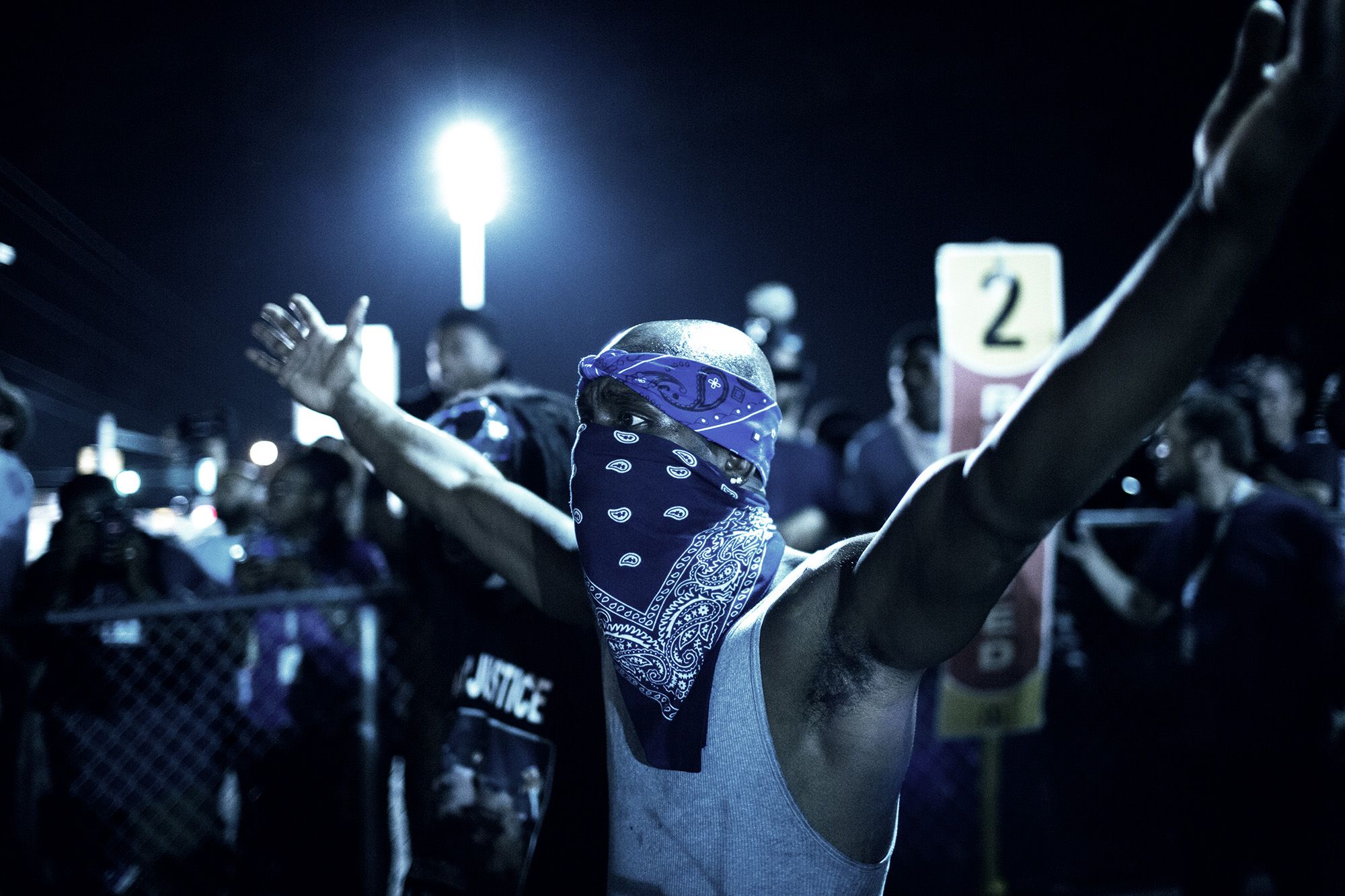
It’s been 11 days since Michael Brown, an unarmed black teenager, was shot dead by Darren Wilson, a white policeman in Ferguson, Mo. Since then, the violent protests that followed have drawn national attention and flummoxed authorities and elected officials looking to lower the temperature. But we’re still missing a lot of key facts about the incident and the ongoing investigations. Despite a calmer night on Tuesday, no one knows when the nightly clashes will end.
Here’s a rundown of what we know—and what we don’t—about the turmoil playing out in this St. Louis suburb.
How did Wilson encounter Brown?
Shortly before noon on Aug. 9, Brown walked into Ferguson Market and Liquor, a convenience store on West Florissant Avenue. He was with a friend, 22-year-old Dorian Johnson. At approximately 11:51, according to a police report, an unidentified officer received a call that a robbery was in progress at the store. But the suspect, who a Brown family lawyer has acknowledged “appears to be” Brown from surveillance footage, was gone when the officer arrived.
Minutes later, Brown and Johnson turned onto Canfield Drive, where they came upon a second officer, Wilson, at 12:01 p.m. At that point, Wilson didn’t know Brown was suspected of committing the robbery minutes earlier, according to Ferguson police chief Thomas Jackson. He just saw a pair of people blocking traffic. Ferguson police have provided conflicting reports on whether Wilson received information that Brown was a robbery suspect between the moment that the officer encountered Brown and the fatal shooting.
So what led to the shooting?
It’s unclear and witness accounts differ. What we know is that within about three minutes, Brown was dead of multiple gunshot wounds to the head and torso. Pictures show him sprawled face down in the middle of the street, with a trail of what appears to be blood seeping from his body.
Johnson has said that Wilson ordered them onto the sidewalk and when they didn’t move right away, the office pulled up to Brown. A struggle ensued, and in Johnson’s version of events, Brown was shot from inside the car before they both took off running with Wilson in pursuit. Johnson has said Wilson fired multiple times despite Brown having his hands up.
Other witnesses have provided conflicting accounts, alternately alleging that Brown was shot in the back or while on his knees in a posture of surrender. And Wilson’s version of events is even harder to ascertain, because he’s in hiding: He fled his St. Louis-area neighborhood a few days after shooting and hasn’t spoken publicly. Police have said Brown reached for Wilson’s gun and the shooting occurred during that struggle. It’s unclear why Brown was shot so many times.
Why has it taken so long for details of the shooting to come out?
Wilson’s name was withheld for almost a week out of concerns for his safety. Three dueling autopsies have either been conducted or ordered—the standard one by the local medical examiner, a private one requested by the family, and a third one ordered by federal authorities.
And federal and state authorities have mostly declined to comment on their pending investigations, while leaks have been kept to a minimum, likely to avoid fanning the cycle of violence that has roiled the city’s downtown streets.
Who’s investigating all this?
Multiple authorities at various levels of law enforcement are looking into the shooting. A St. Louis County grand jury is probing the matter. And a federal civil rights investigation is also underway.
Why does violence keep breaking out every night?
It’s instigated by a small faction of what police describe as “agitators.” They mix in with the crowd of peaceful demonstrators, but they’re on the scene to confront cops as much as to mourn Brown. These people are shooting guns, hurling bricks, bottles and Molotov cocktails, and looting and vandalizing businesses. After dark, West Florissant Avenue and the neighboring streets are extremely dangerous, and several people have been shot.
Who’s trying to keep the peace in Ferguson?
On the demonstrators’ side, it’s a diverse collection of pastors, politicians, community leaders, black power groups, and many ordinary citizens who are disheartened by the way in which the violence has subverted the quest for justice. The vast majority of the protesters in the streets are peaceful—at least, until dark.
Riot-gear clad officers from the county and state highway patrol—now backed by the Missouri National Guard—have responded to provocations from protesters with tear gas, flash bangs, and other methods.
What happens next?
A St. Louis County grand jury will begin hearing evidence on Wednesday. But there’s no hard timetable on how long the whole process will take, and it could be weeks or months before the details of the investigation are know, the U.S. Attorney in Eastern Missouri told TIME Tuesday.
More Must-Reads from TIME
- Inside Elon Musk’s War on Washington
- Meet the 2025 Women of the Year
- For America’s Aging Workforce , ‘Retirement Is a Distant Dream’
- Why Do More Young Adults Have Cancer?
- Colman Domingo Leads With Radical Love
- How to Get Better at Doing Things Alone
- Cecily Strong on Goober the Clown
- Column: The Rise of America’s Broligarchy
Write to Alex Altman / Ferguson, Mo. at alex_altman@timemagazine.com